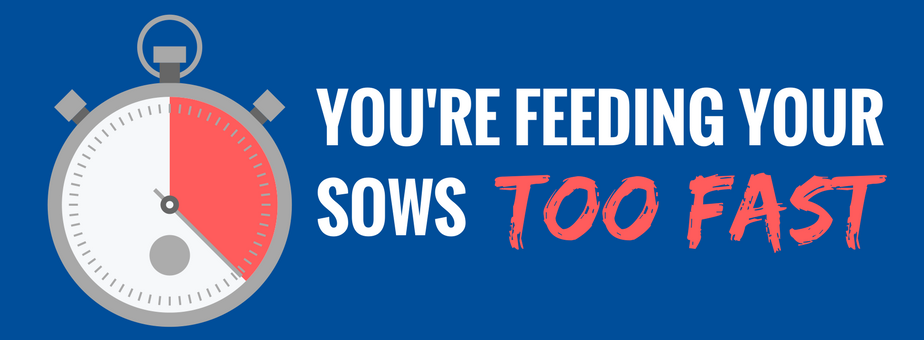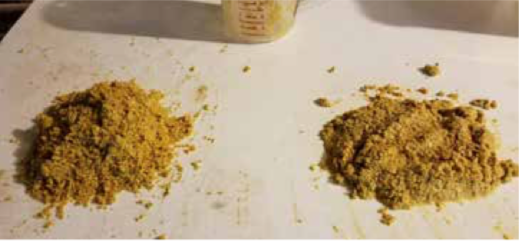
If you work in a sow barn, when is the last time you stopped to consider the feelings of the ladies you spend your days
with?
This isn’t simply an attempt to get your attention. How your sows feel has a direct impact on how they act and react; and how they feel, act and react to their environment will significantly impact their reproductive performance.
*This article has been updated with new information 4/19/22*
Stress is Natural ≠ Stress is Good
When your ladies have their feelings ignored, stress is likely to result. Stress is one of the leading
causes of many of the reproductive issues you work so hard to minimize.
Stress doesn’t “just happen”, it is a natural occurrence or response; but just because it is natural doesn’t mean it is beneficial. Stress is a marker for you; an indication that something else is wrong. It can manifest itself in many ways but is usually seen in increased aggression and reduced reproductive health.
Stress is never the problem! Whatever is causing the stress is!
Stay with me and we will get to the heart of a few keys issues surrounding ESF feeding strategies and how these strategies can be used to mitigate feeding stress.
Issues of Overeating
Controlling my own intake is also, rather challenging. We have all been told for years to eat slower, and pause between
helpings, to reduce our overall intake.
I knew the following concept, but admit to Googling the term to make my point.

There are a few triggers for satiety, but the most obvious is the fullness of your stomach itself, that sends signals to the brain that all is well. The beginning of digestion is also key, as it generates hormones that signal the brain in a positive way. When you eat too quickly, your stomach doesn’t have time to send the correct signals before it is too late, and you’ll likely overeat because you still feel hungry.
Most can recognize this unsatisfied feeling and know if we wait a bit, the full feeling will set in and we’ll be fine. Sows unfortunately, do not have this awareness, and need a different approach.
Satiety in Sows
This common principle of satiety should be understood and used with sows to their benefit. When we feed a sow more slowly, and with enough water, her stomach starts to send the “full” signal to her brain before she has even finished eating. Eating slowly also means that digestion has begun before she is done consuming everything, which releases hormones that will alter her mood and help her feel full.
These same hormones are why we want to take a nap after Sunday dinner... and why she should want to take a nap after eating. If we feed her slow enough, she’ll be willing to leave when asked, and will want to take a nap before ever thinking of checking out the station again. (Assuming a well-designed pen layout that separates the entrance and exit of the ESF feed station).
Feed to Water Ratio
Water is a key element to improving the sow’s interaction with the feed station. Water aids in consumption and increases the volume (not amount) of the food being eaten, thus adding to the full feeling; and most importantly it will help digestion begin. It is an absolute must that water be added to dry feed in an electronic sow feeding system. The water to feed ratio should be checked and adjusted as needed and verified regularly to ensure water pressure or feed density has not altered the ratio.
So how do you find the perfect ratio of water to feed to make sure your sows are happy?
A good mixture of feed and water is easy to check. Simply collect a single dispensing of feed as it is metered out and a single dispensing of water. The mixture should remain watery for 20 - 30 seconds while being mixed in your hand. Feed, whether mash or pellets absorbs a lot of water but if it still has some available water after 30 seconds of mixing, the ratio is good. Below is a picture that shows an example of dry feed (left side) and feed with enough water added (right side).

Feeding Nursing Sows Well
Another feed related issues that producers face is getting a high enough quantity of fresh feed into nursing sows so that she can maintain body condition while producing large amounts of milk.
In order to meet the unique needs of a nursing sow, Nedap Livestock Management created the Nedap Farrowing Feeder with an activator for sow engagement. This allows the sow to trigger the feed to dispense on her schedule so that she will eat whenever she feels the need. It is a wireless Activator, giving producers more control to monitor and maximize feed intake during lactation.
This new way of feeding offers snack sized portions for the sows at regular intervals. This Activator is a great return on investment. The Nedap wireless activator gives producers more control and increases the likelihood that the sow will consume enough during lactation.
Improving Performance
Since the sows nutrient needs are three times higher during lactation, the Nedap Farrowing Feeding with the Activator helps to increase feed intake. It does this by responding to the demand of the sow. It provides shorter farrow-to-feed intervals, and quicker return to service.
Cutting Labor Costs
With the burden some producers face with labor, the Nedap Activator can reduce labor in many ways. One is the automatic alerts sent to the producer if there is no feeding activity detected. This allows barn managers to know which sows need attention without manual feeder checks.
Second, with the set up of demand-driven feeding, it decreases time to clean out stale feed. Nedap customers have saved up to $28 per sow per year with reduced labor time.
Increase Feed Efficiency
With the cost of feed being 65-70% of pork production costs, demand-driven portions can reduce waste and stale feed in the feeder. The Activator is located on the bottom of the feeder. This means, when there is feed in the feeder, it cannot be triggered.
This helps producers adjust rations and delivery times to help fuel efficiency.
Boosting Piglet Performance
The use of the Activator not only stimulates appetite and maximizes feed intake, but customers report a consistent and greater milk yielded in the sow. This has given results of a 50 % reduction in piglet farrow pen deaths and 1.65 pounds of additional weight per piglet.





